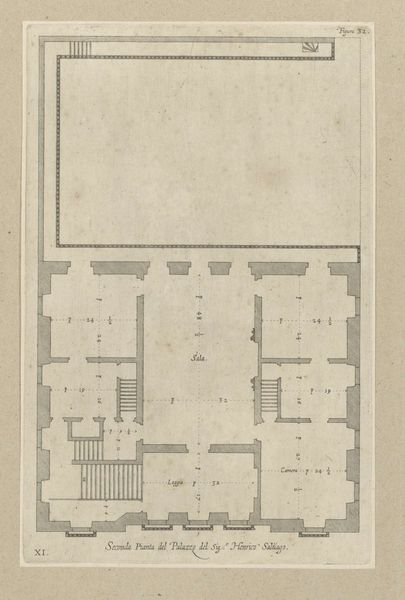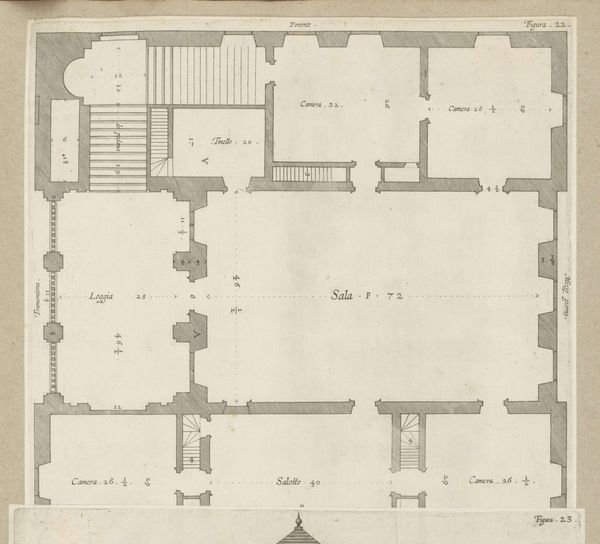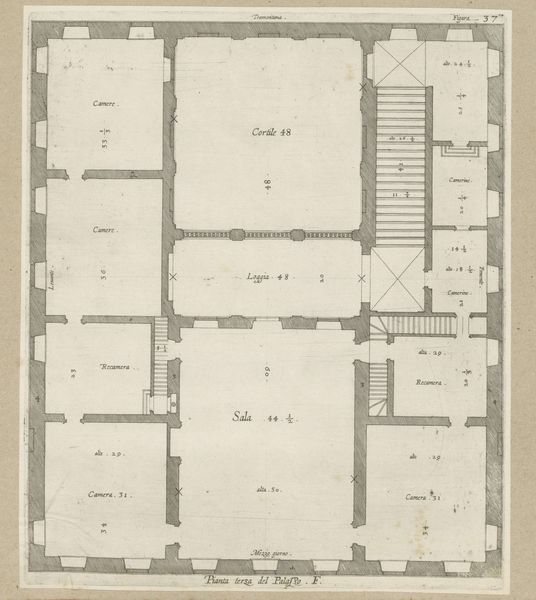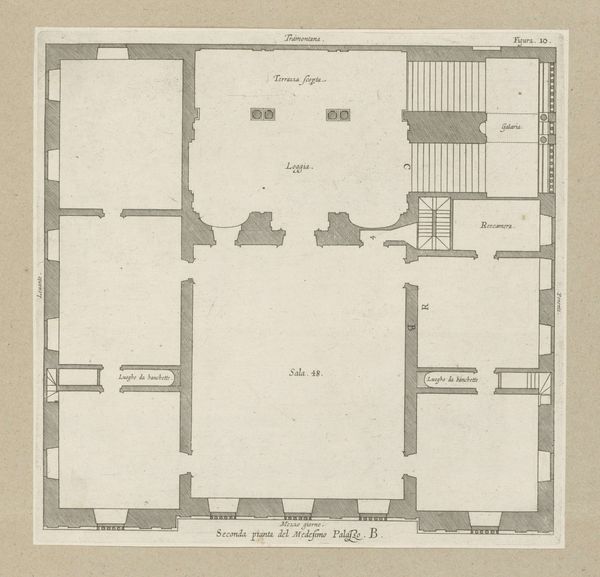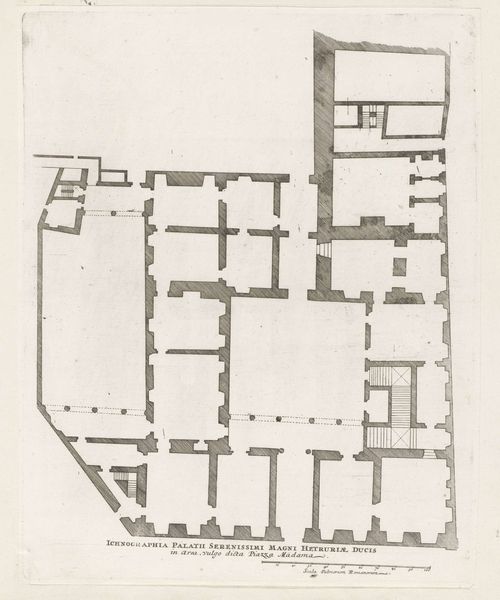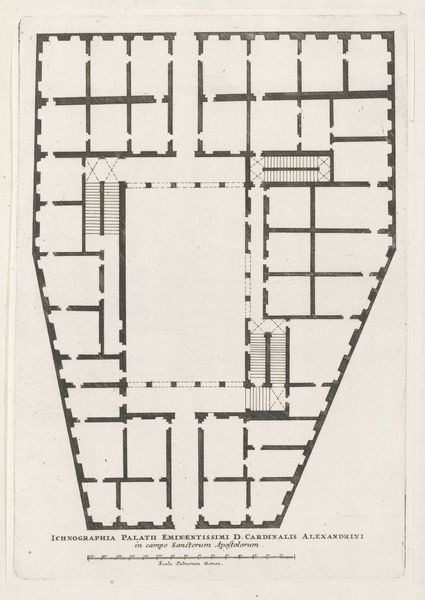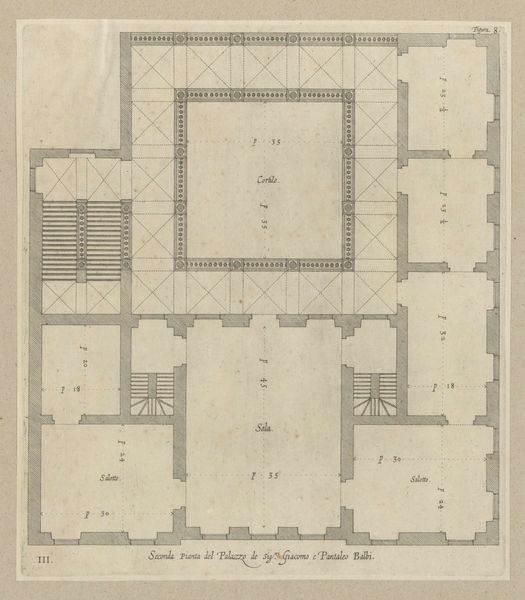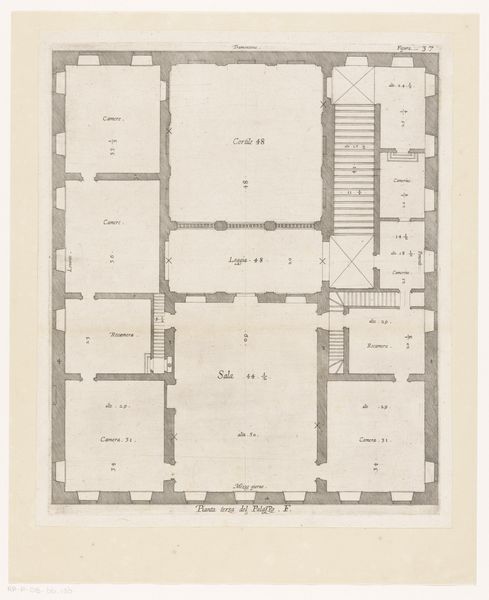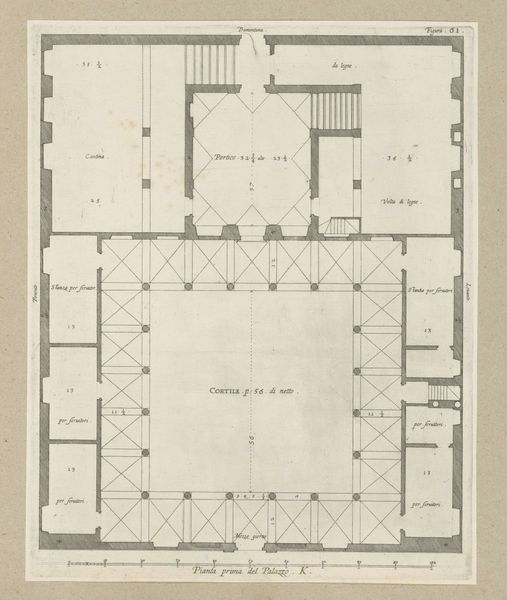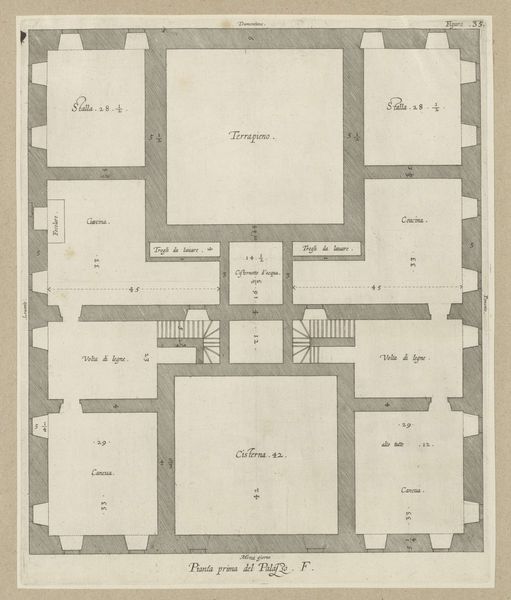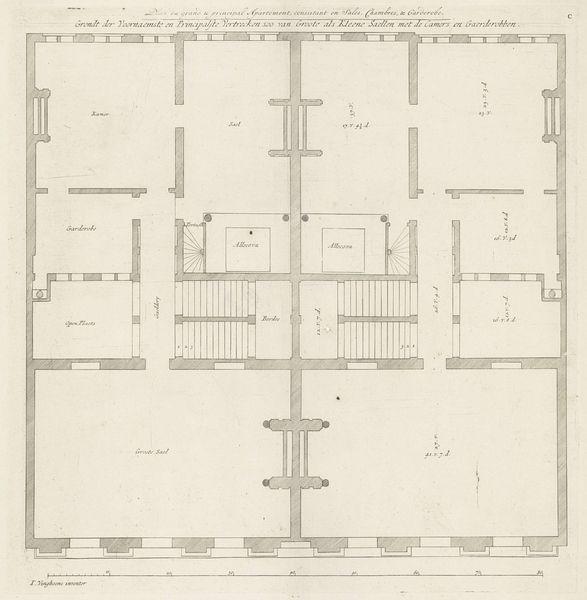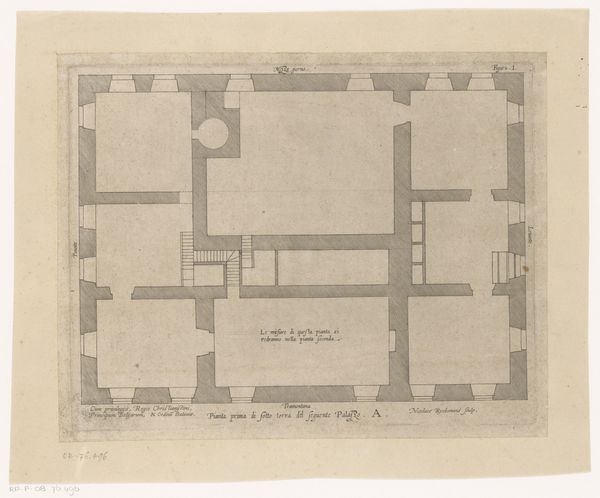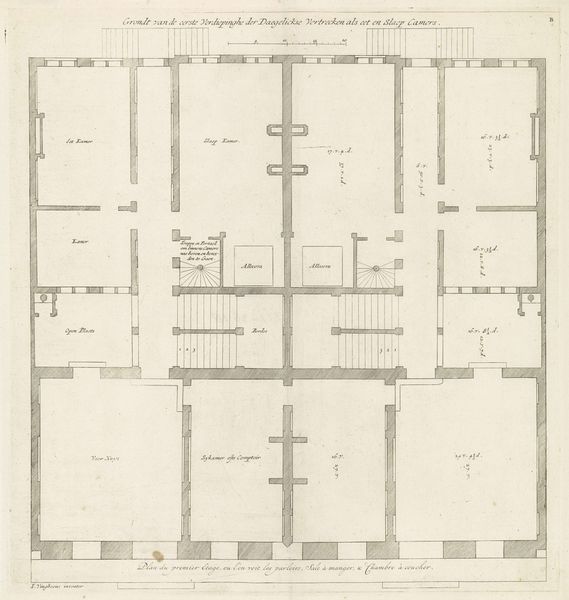
Plattegrond van de tweede verdieping van het Palazzo Lercari-Parodi te Genua 1622
0:00
0:00
drawing, paper, ink, architecture
#
drawing
#
paper
#
ink
#
geometric
#
line
#
cityscape
#
italian-renaissance
#
architecture
Dimensions: height 312 mm, width 242 mm, height 583 mm, width 435 mm
Copyright: Rijks Museum: Open Domain
Editor: This is the “Plattegrond van de tweede verdieping van het Palazzo Lercari-Parodi te Genua,” a floor plan of a palace made by Nicolaes Ryckmans in 1622 using ink on paper. It’s quite austere, very focused on utility rather than aesthetics, or is it? What should we consider when trying to contextualize a drawing like this? Curator: Think about who this drawing was made for. A patron? An architect? Ryckmans' drawing isn't just about the palace; it’s a social document reflecting power, wealth, and status. Palaces, even in their blueprint, project an image. What kind of image do you think the Lercari-Parodi family wanted to convey? Editor: Something about careful organization. You can clearly see how movement is being structured through the space; who can access what room, maybe? Curator: Exactly. The floor plan dictates the choreography of social life, determining who interacts and where. It speaks to the politics of space. Renaissance Italy witnessed intense competition among families vying for dominance. The size, location, and decoration of palaces broadcasted that power. Consider, what purpose did architecture serve beyond mere shelter? Editor: Almost like propaganda, showing off power through geometric precision. Did the Rijksmuseum acquire this as a drawing, or for research of architecture? Curator: Interesting question. Its presence in the Rijksmuseum blurs those lines, doesn’t it? Does its status as an architectural document negate its artistic merit or vice versa? We project our contemporary views of “art” and "drawing" back onto an object meant as something practical in its own day. What assumptions are we making when we see it on a museum wall? Editor: I hadn't thought about that; its function in the present really changes our perception of the past. Curator: Indeed, thinking about how and why such works become "art" reshapes our understanding of social history itself. Thanks, that has changed my perception as well.
Comments
No comments
Be the first to comment and join the conversation on the ultimate creative platform.
